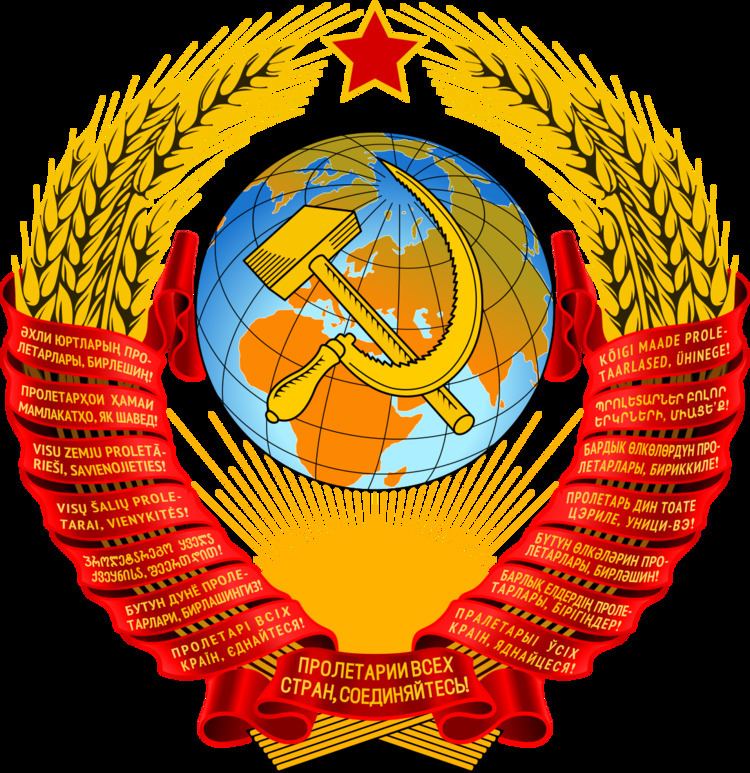Type Bicameral Disbanded 1991 | Established 1938 | |
 | ||
Chambers Soviet of NationalitiesSoviet of the Union Succeeded by Congress of People's DeputiesSeveral post-SovietSupreme Councils:list Supreme Soviet of Russia Verkhovna Rada of Ukraine Supreme Soviet of Belarus Parliament of the Republic of Moldova Supreme Council of Estonia Supreme Soviet of Latvia Supreme Council of Lithuania Supreme Soviet of Kazakhstan Supreme Soviet of Armenia Supreme Soviet of Azerbaijan Supreme Council of the Republic of Georgia Supreme Council of Kyrgyzstan Supreme Assembly of Uzbekistan Supreme Assembly of Tajikistan Assembly of Turkmenistan | ||
The Supreme Soviet of the Soviet Union (Russian: Верхо́вный Сове́т СССР, Verkhóvnyj Sovét SSSR) was the highest legislative body in the Soviet Union and the only one with the power to pass constitutional amendments. It elected the Presidium serving as the collective head of state of the Soviet Union, formed the Council of Ministers and the Supreme Court, and appointed the Procurator General of the Soviet Union.
Contents
Structure
The Supreme Soviet was made up of two chambers, each with equal legislative powers, with members elected for four-year terms:
Under the Soviet constitutions of 1936 and 1977, the Supreme Soviet was imbued with great lawmaking powers.
After 1989 it consisted of 542 deputies (down from previously 1,500). The meetings of the body were also more frequent, from six to eight months a year. The presidium carried out the day-to-day operations of the Supreme Soviet when it was not in session.
Chairmen of the presidium of the Supreme Soviet of the USSR (1938–1989)
- Mikhail Kalinin 1938–1946
- Nikolay Shvernik 1946–1953
- Kliment Voroshilov 1953–1960
- Leonid Brezhnev 1960–1964
- Anastas Mikoyan 1964–1965
- Nikolai Podgorny 1965–1977
- Leonid Brezhnev (second term) 1977–1982
- Yuri Andropov 1982–1984
- Konstantin Chernenko 1984–1985
- Andrey Gromyko 1985–1988
- Mikhail Gorbachev 1 October 1988 – 25 May 1989
Chairmen of the Supreme Soviet of the USSR (1989–1991)
Convocations
Supreme councils of union and autonomous republics
Beside the Supreme Council, in the Soviet Union supreme councils also existed in each of union and autonomous republics. The supreme councils of republican level also were headed by their presidiums, but all those councils consisted of one chamber. After the dissolution of the Soviet Union, some councils of the succeeded independent republics simply changed their name to their historic or to emphasise the importance of the council as a national parliament, while others went through some major restructuring by changing to double-chamber assemblies. All republics in the Soviet Union were soviet (as soviet national), yet 15 were of union level, while the other, autonomous republics, were subordinated to the union republics.
Supreme councils of union republics
Supreme councils of autonomous republic
List of known autonomous republics councils
